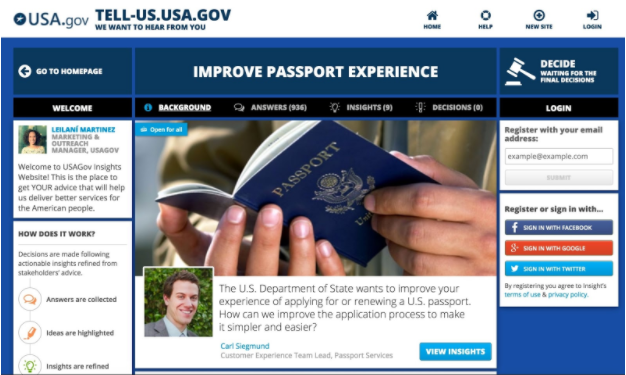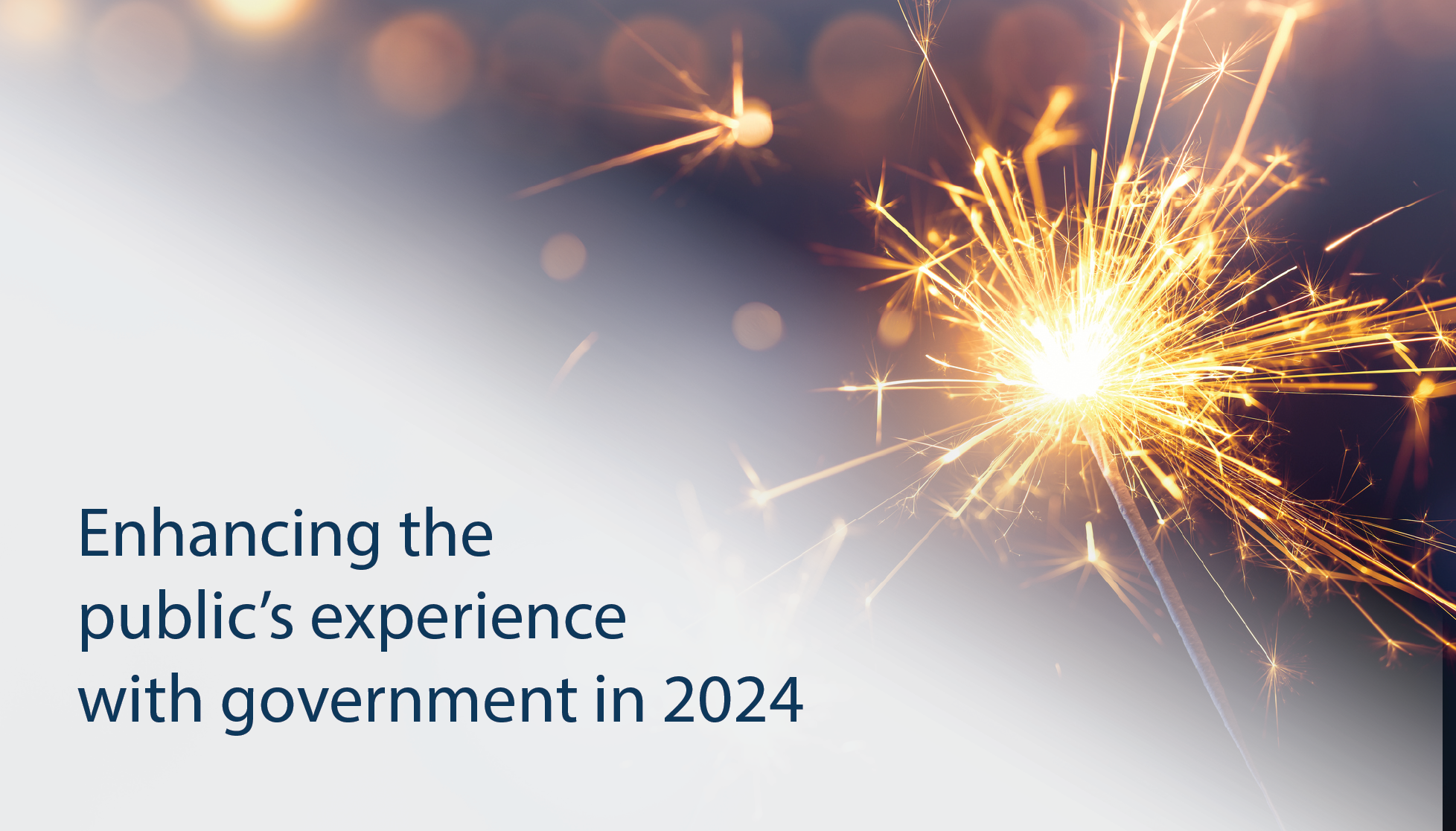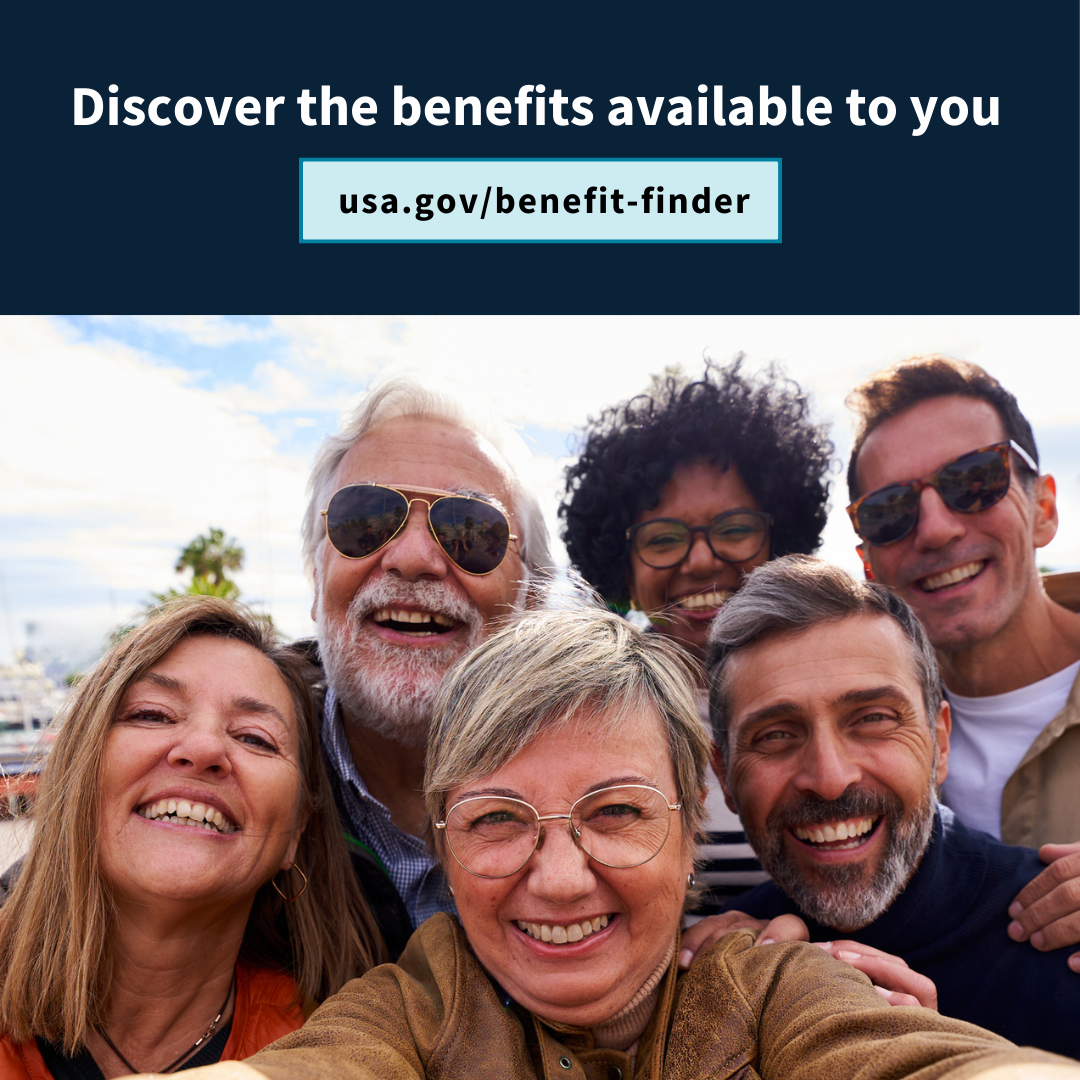The mission of USAGov is to make vital information and services accessible to the American people, and we’re always seeking innovative new ways to further that goal. Last year, we initiated an effort to explore methods of getting feedback from the public about their experiences accessing key government services.
We researched options and identified a third-party stakeholder research software tool to test. The tool transforms hundreds of public comments into a short list of usable recommendations. In December 2016 we launched a pilot study with the tool, in partnership with the U.S. Department of State (State).
State estimates that more than 20 million Americans will apply for or renew a passport this year, which would make 2017 the busiest year for The Passport Office in history. Passport Services staff were eager to make the processes as easy as possible and committed to doing so. Therefore, they were interested in getting feedback about the popular service. State’s passport processes were thus an ideal match for the software. By the end of the pilot study, the partnership would lead to a set of key recommendations that helped motivate changes to the passport process.
How we got started
The software tool we used works by providing users with a customizable website, which we used to post questions and receive public comments. The site also allowed for two-way communication, similar to social media, so we were able to update the people who made suggestions as we completed each step of the pilot.
We narrowed our focus to request public feedback on a single area of the passport process and asked:
“The U.S. Department of State wants to improve your experience of applying for or renewing a passport. How can we improve the application process to make it simpler and easier?”
USAGov then posted a link to the site requesting feedback on multiple platforms including our own websites. We also shared the link with our Twitter followers, Facebook fans, and email subscribers. The U.S. Postal Service and the White House also pitched in by inviting participation through their websites.
How it worked
Over two weeks in December nearly 1,000 people responded to our request. Each time a participant responded, the tool also asked them to highlight the portions of their comments they considered to be the most important. Then they were asked to refine those highlighted comments by placing them into a list of categories, based on the growing body of participant feedback.
System administrators later fine-tuned those categories into a list of recommendations for State that was, for all intents and purposes, authored by the public.
How it went
The recommendations were welcomed by Passport Services, which was fully invested in improving its processes. While some of the concepts had already been suggested or were in the early stages of implementation, new ideas included sending renewal reminders to customers and expanding services to allow the public to get passport questions answered on evenings and weekends.
In response to the recommendations from the public, State decided to make several significant changes, including:
- Beginning research on expanding customer support to 24 hours a day, 7 days a week
- Coordinating with other federal agencies to streamline passport paperwork
- Beginning research on a future passport renewal notification system
State analyzed the recommendations, assessed its current action plan, considered how to incorporate changes, and determined how to act on the information. In any large organization, gaining buy-in to implement decisions can be challenging. However, having the distilled opinions of a large sample of the population helped overcome that obstacle, and made the buy-in process easier at State.
Read the public's recommendations and the Department of State's decision.




